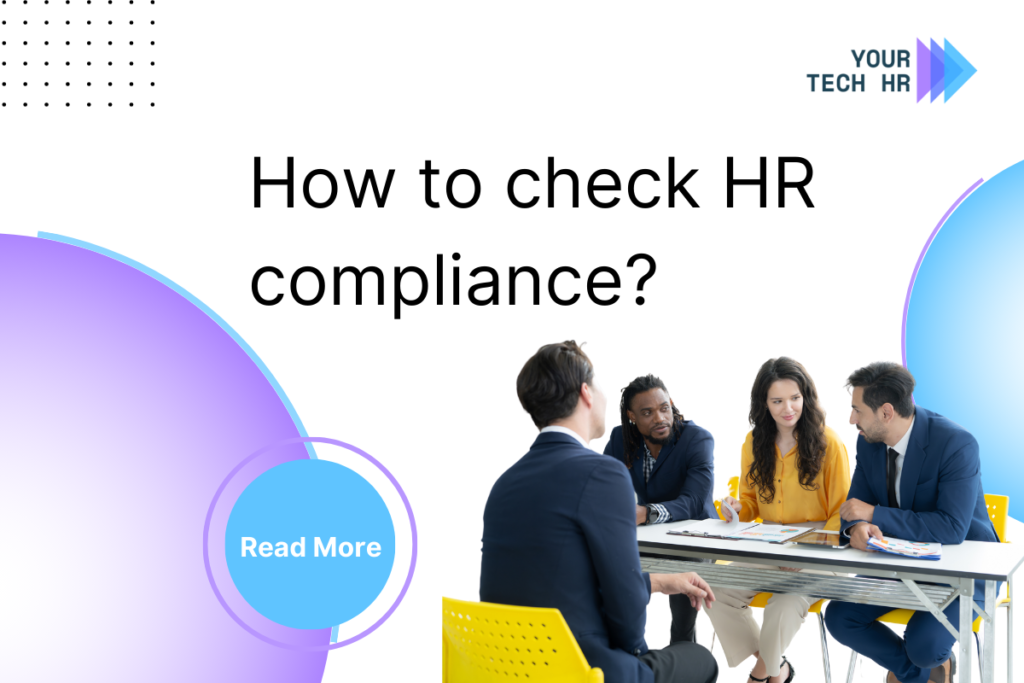In today’s business world, staying on top of HR compliance is more important than ever. But what exactly is HR compliance, and how can you make sure your company is following all the rules? Don’t worry – we’re here to break it down for you in simple terms. This guide will walk you through the basics of HR compliance and give you practical tips to keep your business on the right track.
What is HR Compliance?
Let’s start with the basics. HR compliance means following all the laws and rules that apply to how a company treats its employees. These rules cover things like:
- Hiring and firing
- Pay and benefits
- Workplace safety
- Employee rights
- Anti-discrimination policies
Staying compliant isn’t just about avoiding fines or lawsuits (although that’s important too). It’s about creating a fair, safe, and positive workplace for everyone.
Why is HR Compliance Important?
You might be wondering, “Why should I care about HR compliance?” Here are a few good reasons:
- It keeps your business safe: Following the rules helps you avoid expensive fines and lawsuits.
- It protects your employees: Compliance ensures that your workers are treated fairly and safely.
- It boosts your reputation: Companies known for treating employees well attract better talent and more customers.
- It improves productivity: When employees feel safe and respected, they’re more likely to do their best work.
Now that we know why it matters, let’s dive into how you can check your HR compliance.
The HR Compliance Checklist for 2024
Here’s a handy checklist to help you make sure you’re covering all your bases:
1. Review Your HR Policies
Start by taking a good look at your company’s HR policies. Are they up to date? Do they cover all the necessary areas? Here are some key policies to check:
- Equal Employment Opportunity (EEO) policy
- Anti-harassment and anti-discrimination policies
- Employee handbook
- Leave policies (including sick leave, vacation time, and family leave)
- Pay and overtime policies
- Health and safety procedures
Make sure these policies are written in clear, simple language that all employees can understand.
2. Stay Updated on Employment Laws
Laws can change, and it’s crucial to stay informed. Some areas to keep an eye on:
- Minimum wage laws (these can vary by state or city)
- Overtime regulations
- Family and Medical Leave Act (FMLA) requirements
- Americans with Disabilities Act (ADA) compliance
- Equal Employment Opportunity Commission (EEOC) guidelines
Consider subscribing to HR newsletters or joining professional organizations to stay in the loop about new laws and changes.
3. Audit Your Hiring Process
Take a close look at how you hire new employees. Here are some things to check:
- Job postings: Are they free from discriminatory language?
- Application forms: Do they ask only for information that’s legally allowed?
- Interview process: Are all candidates asked the same basic questions?
- Background checks: Are you following all the rules about what you can check and how?
Remember, the goal is to hire based on skills and qualifications, not personal characteristics.
4. Check Your Pay Practices
Make sure you’re paying employees fairly and correctly. This includes:
- Paying at least minimum wage
- Calculating overtime correctly
- Providing equal pay for equal work
- Keeping accurate time and pay records
- Classifying employees correctly (e.g., employee vs. independent contractor)
If you’re not sure about something, it’s always best to check with an HR expert or lawyer.
5. Review Your Benefits Package
Employee benefits are a big part of HR compliance. Check that you’re offering all required benefits, such as:
- Health insurance (if your company is large enough to be required to offer it)
- Workers’ compensation insurance
- Unemployment insurance
- Social Security and Medicare contributions
Also, make sure any optional benefits you offer (like retirement plans) follow all the rules.
6. Ensure Workplace Safety
Creating a safe workplace is a key part of HR compliance. Here’s what to look at:
- Do you have required safety equipment?
- Are you following Occupational Safety and Health Administration (OSHA) guidelines?
- Do you have procedures for reporting safety concerns?
- Are you keeping records of any workplace injuries or illnesses?
Remember, a safe workplace isn’t just about following rules – it shows your employees you care about their well-being.
7. Check Your Record-Keeping
Good record-keeping is crucial for HR compliance. Make sure you’re keeping the right records and storing them securely. This includes:
- Employee personal information
- Pay records
- Time sheets
- Tax forms
- Performance reviews
- Disciplinary actions
Also, check how long you need to keep each type of record. Some need to be kept for years after an employee leaves.
8. Train Your Managers
Your managers play a big role in HR compliance. Make sure they’re trained on:
- Anti-discrimination and anti-harassment policies
- How to handle employee complaints
- Proper hiring and firing procedures
- Performance review best practices
- How to accommodate employees with disabilities
Regular training helps ensure everyone is on the same page and following the rules.
9. Create a System for Handling Complaints
Every company should have a clear process for employees to report problems or concerns. This system should:
- Be easy for employees to use
- Keep complaints confidential
- Protect employees from retaliation
- Include a plan for investigating complaints
Having a good complaint system can help you catch and fix problems early.
10. Plan for Emergencies
Part of HR compliance is being prepared for unexpected events. This includes:
- Having an emergency evacuation plan
- Preparing for potential natural disasters
- Having a plan for unexpected business closures
- Knowing how to handle a data breach
Make sure all employees know what to do in case of an emergency.
11. Conduct Regular Compliance Audits
Don’t wait for problems to pop up. Regularly check your HR practices to make sure you’re staying compliant. You might want to:
- Use an HR compliance checklist (like this one!)
- Hire an outside expert to review your practices
- Set reminders to review policies and procedures regularly
Staying proactive about compliance can save you a lot of headaches down the road.
Balancing HR Strategy with Compliance Requirements
While compliance is crucial, it’s important to remember that HR is about more than just following rules. A good HR strategy balances compliance with other goals, like:
- Attracting and keeping great employees
- Creating a positive company culture
- Helping employees grow and develop
- Supporting the company’s overall business goals
When you’re working on HR compliance, think about how you can meet the requirements in a way that also supports these other goals. For example, instead of just having a basic anti-discrimination policy, you could create programs that actively promote diversity and inclusion.
Conclusion: Making HR Compliance Work for You
Checking HR compliance might seem overwhelming at first, but it doesn’t have to be. By breaking it down into manageable steps and making it a regular part of your business practices, you can create a workplace that’s not just compliant, but truly great for everyone.
Remember, HR compliance isn’t just about avoiding problems – it’s about building a strong foundation for your business to grow and thrive. By following these guidelines and staying up to date with the latest requirements, you’ll be well on your way to HR compliance success in 2024 and beyond.


